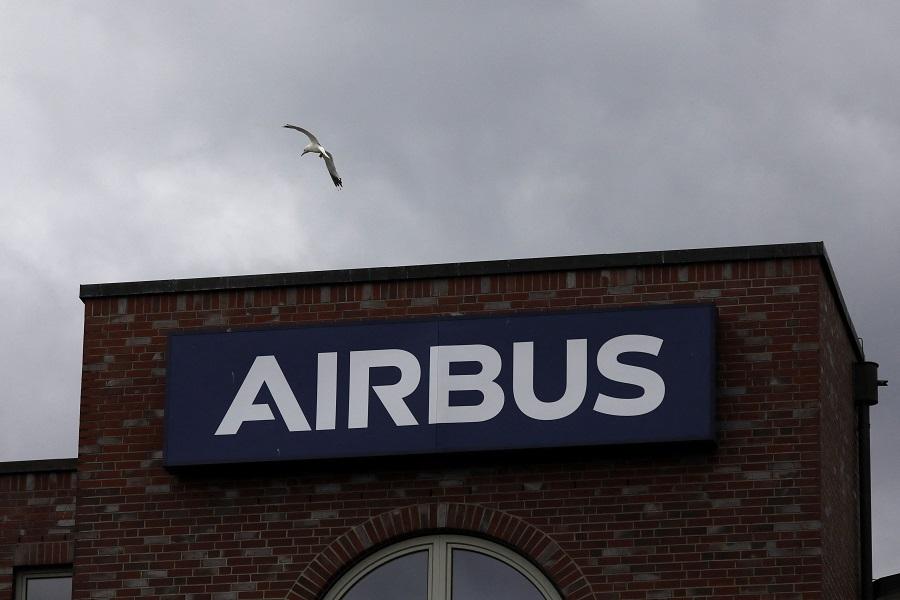PARIS: The Covid-19 pandemic has hit aircraft manufacturers hard but Airbus is already looking toward a new plane to help drive its recovery and get a leg up on rival Boeing.
The A321 XLR will be the latest in Airbus’s single-aisle A320 family when deliveries begin in 2023.
The XLR stands for extra long range and the aircraft can more than handle crossing the North Atlantic, opening up the possibility airlines can use it on routes that have been the preserve of wide-body long-range aircraft up to now.
Since the model was first presented at the Paris Air Show in June 2019 the aircraft has picked up more than 450 orders, including 37 last year.
Airbus, which has said its new orders plunged 65 percent in 2020 to 268, releases earnings results on Thursday.
Boeing already reported last month an annual $13.8 billion loss for its commercial aircraft division, with revenues slashed in half by the pandemic to $16.1 billion.
“The XLR continues to enjoy a very strong market demand,” Airbus commercial chief Christian Scherer said recently.
Among the 24 clients for the A321 XLR are American Airlines and compatriot United Airlines, which have ordered 50 each, while Australia’s Qantas wants 36.
The aircraft is positioned at what is known as the “middle of the market” in the aviation industry — the gap between single-aisle narrow-body aircraft and twin-aisle wide-body planes.
The only aircraft to have served this segment was the single-aisle Boeing 757, which had a range of approximately 4,000 nautical miles (7,400 kilometers), and ended production in the mid-2000s.
This was enough range for the aircraft to make it across the North Atlantic, although it was complicated for airlines to use it in practice as in case of strong winds it would need to make a refueling stop, throwing the travel plans of passengers with connecting flights into chaos.
While the longest-range aircraft so far the Airbus A320 family met the range of the Boeing 757, it is only with the XLR and its range of 4,700 nautical mile that airlines will be able to use the aircraft on North Atlantic routes without worry.
Before the pandemic the aircraft was seen as a flexible option for airlines to test and develop new routes with less traffic in a more profitable manner as it carries fewer passengers than Airbus’s wide-body aircraft, the A330 and A350.
With the pandemic having decimated air traffic, airlines are likely to have even more need for such aircraft as they rebuild their route networks.
“It’s fitting very well with the market needs,” said Airbus CEO Guillaume Faury.
“It was the case before the pandemic but we think this is going to be even more the case after the pandemic,” he added.
An 321 XLR “costs much less to buy and service” as well as fly than a wide-body aircraft, said Jerome Bouchard, an aviation specialist at consulting firm Oliver Wyman.
Especially as “pilot training — an important element of costs — can be mutualized between long-haul operations and those for short- and medium-haul flights,” he told AFP.
The various versions of the A321 account for nearly half of the 6,355 single-aisle aircraft on Airbus’s order book.
Airbus’s Scherer believes that the XLR “is going to be the main proportion of our A321s. I don’t see it as a niche.”
Boeing currently has nothing comparable to the XLR to offer.
Last year, preoccupied with the 737 MAX crisis and saddled with a debt of nearly $64 billion, Boeing decided to not go forward with what it called its New Midsize Aircraft (NMA) project.
The plan was for delivering by 2025 an aircraft that could transport up to 275 passengers nearly 9,000 km.
For Teal Group aviation analyst Richard Aboulafia, this means Airbus has seized the middle market just as “Covid-19 accelerates the shift to the middle market.”
He said “Boeing faces a very serious mid-market challenge.”
If Boeing won in the 2000s with its choice of developing the long-range B787 Dreamliner while Airbus went with the super-jumbo A380, this time the situation is reversed.
The decision to cancel the NMA “will cost Boeing dearly, at least for the decade to come,” said Bouchard.
But Boeing may not be giving up on the middle market segment.
Comments by CEO David Calhoun last month left the impression it was working on such a plan.
He said the firm was taking its time but that its engineers were advancing “so that we’re ready when that moment comes to offer a really differentiated product.”
The Aviation Week trade journal has reported that Boeing has begun to sound out its suppliers about an aircraft that could enter service at the end of the decade.

Airbus backs jet output target amid supplier concernsQatar Airways expects to keep Airbus A380s parked for years

